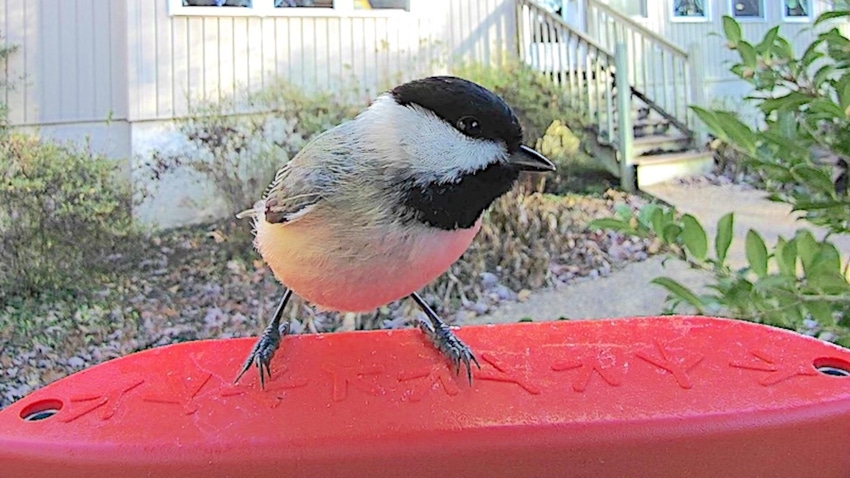This Technology Is For The Birds
In honor of National Bird Day, Design News looks at how technology has transformed bird watching.

At a Glance
- Advances in technologies such as GPS and satellites are making it easier to study and predict bird migration and behavior.
- Both professional scientists and amateur bird enthusiasts have access to high-tech tools for bird observation.
For years, the science of bird tracking was done largely through observation, with the help of reference sources that identified the physical characteristics and behavior of various bird species. But thanks to advances in areas like radar and geolocation technology, in conjunction with the Internet and more recently AI (artificial intelligence) scientists can now more precisely track and even predict bird movements over the seasons and determine the origins of various bird species.
Many of these advances are becoming an important part of conservation efforts to protect endangered bird populations, and enhance bird safety around humans and other animals.
Technology is not only benefiting those who study birds for a living but also amateur bird enthusiasts. Ardent bird watches can use DIY approaches to identify the birds that fly over their homes and come to their backyard feeders.
Understanding Bird Migration
According to an article on the site of American Bird Conservancy, a satellite system called Argos has been used to track bird movements since the 1980s. But Argos has more recently been supplanted by GPS satellites, which work in conjunction with earthbound GPS devices to more accurately pinpoint bird locations.
In an article published on the site of World Economic Forum, scientists reportedly are setting up a global network of receiver stations called the Motus network, which currently has 1,500 receivers in 31 countries. Each receiver records the presence of any birds within a nine-mile radius that scientists have fitted with small, lightweight radio transmitters, and share the data online. Scientists consider the data from this network invaluable in understanding bird migratory patterns.
GPS receivers are being fitted on birds in conservation efforts. Photo courtesy of Jean-Christophe Verhaegen / AFP/Via Getty Images.
The same article noted that satellite telemetry is used to not only learn the bird’s location at any given time, but also what route it used to get there and how fast it was flying.
For smaller birds unable to be fitted with radio transmitters, the American Bird Conservatory article noted that scientists are geotagging smaller birds with tiny, light-based devices that record the time, location, and sunlight conditions. While these light-level geolocators can only record and not transmit data, they require that scientists recapture the birds ito collect data. The article noted this task is not difficult, because the birds often return to the same location.
Enter AI
According to an online article in Smithsonian Magazine, advances in AI modeling and computer processing power enabled Cornell University researchers to supercharge a tracking technology called BirdCast to monitor and predict massive bird movements. The platform now monitors bird movements throughout the U.S. using radar from the National Weather Service. Historical AI data can now be used to forecast bird migration in minutes and predict their movements at the county level up to three days in advance.
Such information also plays a role in bird conservation and safety, according to the article. The Smithsonian article noted that because artificial light, such as those emanating from buildings. can attract birds and cause them to crash into them, municipalities and businesses can now use data from BirdCast to turn off lights when needed so birds can pursue safer migratory patterns.
Amateur Bird Tracking
Although trained scientists have the most access to sophisticated technology to monitor bird movements, that does not relegate bird hobbyists to using outdated products such as binoculars to observe birds. An article on the Audubon Society site noted that bird enthusiasts can engage in NFC (nocturnal flight call) recording by placing microphones on their home roofs or even windows to hear bird migrations overhead. By recording this data and using computer software like Audacity to transform the sound activity into a spectrogram, users can more accurately interpret the sounds to reveal the identity of the birds.
The article also noted that a Facebook group is now available for NFC users to share information on bird identification as well as technology to conduct NFC.
For those with only a smartphone, there are also now apps that can identify various bird species and give plenty of useful information. No longer must one fumble through the pages of a bird field guide.
Backyard Bird Tech
Technology is also advancing for those who simply wish to observe birds coming to their backyard bird feeders. Enter the smart bird feeder. The best example of this is a Kickstarter invention called Bird Buddy, which comes with a camera and an app to send users photos and videos of all bird feeder activity. You can see the video here of the device being set up.
Bird Buddy is also mentioned in another YouTube video that rates some of the best cameras for documenting bird activity near bird feeders. You can view that video here.
About the Author(s)
You May Also Like



.jpg?width=300&auto=webp&quality=80&disable=upscale)

